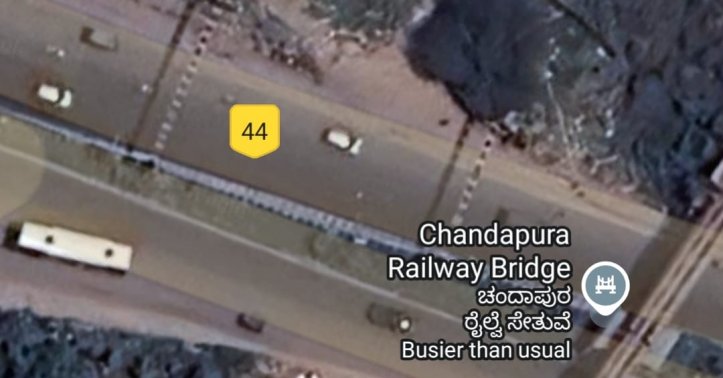
A missed link in Bangalore's suburban rail dream
Just a few kilometers south of Electronics City, where the railway line quietly intersects the ever-busy Hosur Road, lies an idea whose time has long been waiting. The modest Heelaige halt known to few and used by fewer, sits slightly off the main corridor, shadowed by its own inaccessibility.
Yet, hidden beneath this underutilized stop lies an untapped opportunity to reshape suburban connectivity in southern Bangalore.
Let's imagine if the Heelaige station were reborn, not as an isolated halt in the fields, but as a fully accessible suburban node right at the Chandapura railway crossing.
Two small platforms on either side of Hosur Road, connected by a skywalk arching gracefully over the highway, could transform a forgotten stretch into a vibrant interchange.
With small step, the suburban rail could meet the rhythm of the city’s arterial traffic, linking Marathahalli, Bellandur, Kagdaspura, and Electronic City into one seamless commuter network.
It is rare in large-scale infrastructure to find such a simple, low-cost intervention with the power to ripple through so many lives.
A relocated and better-connected Heelaige station could serve thousands daily, reducing the dependence on road transport and easing the chronic congestion choking the Outer Ring Road corridor.
For those who now spend hours in traffic, this could be the difference between fatigue and freedom.This proposal is not new.
It had once found resonance within the corridors of Southern Railway, discussed with the then Additional Divisional Railway Manager. But like many well-intentioned public initiatives, it lost momentum amid the disruptions.
Reviving the initiative now could offer a rare quick win for urban mobility, proof that progress doesn’t always demand monumental budgets, just clear intent.
As Bangalore places fresh faith in the Suburban Railway Project to knit together its scattered geographies, the Heelaige migration stands out as a symbol of practical vision.
Connectivity, after all, is not only about adding new tracks, it is about completing the missing links that make the system truly usable.
Perhaps this is the right moment to pause and ask: how many other overlooked nodes like Heelaige lie waiting?
How many small, thoughtful interventions could reverse the growing divide between where we live and how we move?
Sometimes, systemic transformation begins not with grand ambition but with the quiet relocation of a forgotten halt into the heart of the city’s movement.
By Pritam Kumar Sinha








